Coastal wattle, Boobyalla
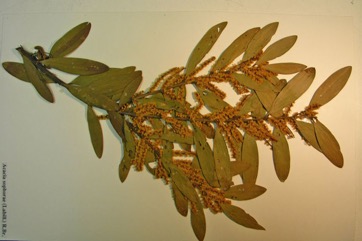
It is a warm temperate and subtropical plant. It occurs naturally in cooler parts of eastern Australia. It prefers light sandy soil but can tolerate most kinds of soil conditions. It needs well drained soil. It requires an open sunny position. It is drought, wind and frost resistant. It is salt tolerant. It often grows along coastal sand dunes. It suits hardiness zones 9-11. Tasmania Herbarium. Arboretum Tasmania.
Synonyms
- Acacia longifolia var. sophorae (Labill.) F. Muell.
- Acacia longifolia var. sophorae (Labill.) Benth.
- Acacia sophora (Labill.) R. Br. [Spelling variant]
- Acacia sophorae (Labill.) R. Br.
- Acacia sophorina (Labill.) R. Br. [Spelling variant]
- Cuparilla sophorae (Labill.) Raf.
- Mimosa sophorae Labill.
- Phyllodoce sophora Link
- Racosperma sophorae (Labill.) C. Mart.
Edible Portion
- Gum, Grub, Seeds, Flowers
Where does Coastal wattle grow?
Found in: Australia, New Zealand, Tasmania
Notes: There are about 1,350 Acacia species. Over 1,000 occur in Australia. Also as Mimosaceae.
Growing Coastal wattle, Boobyalla
Cultivation: It is grown from seed. The seed need treatment to break the hard seed coat. Normally this is by putting the seeds in very hot water and letting the water cool down overnight then planting the seeds immediately.
Edible Uses: The pods are roasted and the seeds picked out and eaten. (The pods are not eaten.) The roasted seeds are ground into flour and sprinkled on salads and sandwiches.
Production: Plants flower August to September.
Nutrition Info
per 100g edible portion| Edible Part | Energy (kcal) | Protein (g) | Iron (mg) | Vitamin A (ug) | Vitamin c (mg) | Zinc (mg) | % Water |
|---|---|---|---|---|---|---|---|
| - | - | - | - | - | - |
Coastal wattle, Boobyalla Photos

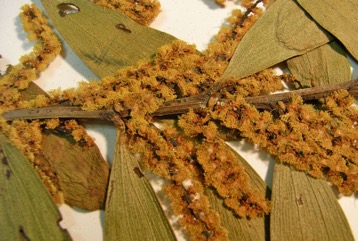
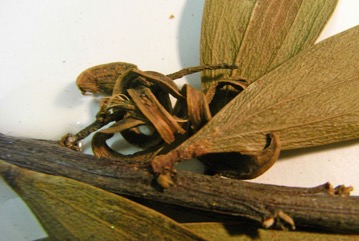
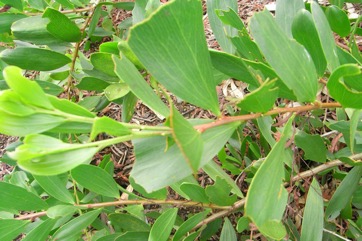
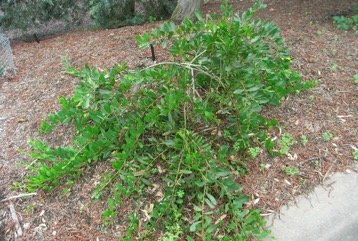
References
W. T. Aiton, Hortus kew. ed. 2, 5:462. 1813
Barker, R., 1991, A Checklist of Native Plants Reportedly Edible. Australian Food Plant Study Group. Society for Growing Australian Plants. (As Acacia sophorae)
Bodkin, F., 1991, Encyclopedia Botanica. Cornstalk publishing, p 33
Bonney, N., 1997, Economic Native Trees and Shrubs for South Australia. Greening Australia (SA) inc. Campbelltown SA 5074 p 9 (As Acacia longifolia var. sophorae)
Breidahl H., 1997, Australian Southern Shores. Lothian. p 120
Cameron, M., (Ed.) 1981, A Guide to Flowers & Plants of Tasmania. Reed p 102
Cherikoff V. & Isaacs, J., The Bush Food Handbook. How to gather, grow, process and cook Australian Wild Foods. Ti Tree Press, Australia p 194
Clarke, P. A., 2013, The Aboriginal Ethnobotany of the Adelaide Region, South Australia. Transactions of the Royal Society of South Australia. (2013), 137(1): 97-126
Caton, J.M. & Hardwick, R. J., 2016, Field Guide to Useful Native Plants from Temperate Australia. Harbour Publishing House. p 52 (As Acacia sophorae)
Cribb, A.B. & J.W., 1976, Wild Food in Australia, Fontana. p 78 (As Acacia longifolia var. sophorae)
Curtis, W.M., 1956, The Students Flora of Tasmania Vol 1 p 124
Edible and Useful Native Plants (off internet) (As Acacia sophorae)
Elliot, W.R., & Jones, D.L., 1982, Encyclopedia of Australian Plants suitable for cultivation. Vol 2. Lothian. p 115
Etherington, K., & Imwold, D., (Eds), 2001, Botanica's Trees & Shrubs. The illustrated A-Z of over 8500 trees and shrubs. Random House, Australia. p 56
Facciola, S., 1998, Cornucopia 2: a Source Book of Edible Plants. Kampong Publications, p 151
Gott, B & Conran, J., 1991, Victorian Koorie Plants. PO Box 666 Hamilton, Victoria 3300, Australia. p 28
Greig, D., 1996, Flowering Natives for Home Gardens. Angus & Robertson. p 39
Grieg, D., 2002, A photographic guide to Wildflowers of South-eastern Australia. New Holland. p 62
Hardwick, R.J., 2000, Nature's Larder. A Field Guide to the Native Food Plants of the NSW South Coast. Homosapien Books. p 48
Harris, S., Buchanan, A., Connolly, A., 2001, One Hundred Islands: The Flora of the Outer Furneaux. Tas Govt. p 97
Haslam, S., 2004, Noosa's Native Plants. Noosa Integrated Catchment Assn. Inc. p 15
Hastings Advance Community College, 2017, Uses for Native Plants of the Mornington Peninsula. 86pp.
Hemphill, I, 2002, Spice Notes. Macmillan. p 413
Holliday, I., 1979, A Field Guide to Australian Native Shrubs. Rigby. p 12
Howells, C & Gulline, H., 2003, Coastal Plants of Tasmania. Plant Identikit. Australian Plant Society, Tasmania. p 25
ILDIS Legumes of the World http:www;ildis.org/Legume/Web
Lazarides, M. & Hince, B., 1993, Handbook of Economic Plants of Australia, CSIRO. p 6
Low, T., 1991, Wild Food Plants of Australia. Australian Nature FieldGuide, Angus & Robertson. p 41
Low, T., 1992, Bush Tucker. Australia’s Wild Food Harvest. Angus & Robertson. p 86
Paczkowska, G . & Chapman, A.R., 2000, The Western Australian Flora. A Descriptive Catalogue. Western Australian Herbarium. p 314 (As Acacia longifolia subsp. sophorae)
Plants for a Future database, The Field, Penpol, Lostwithiel, Cornwall, PL22 0NG, UK. http://www.scs.leeds.ac.uk/pfaf/
Robins, J., 1996, Wild Lime. Cooking from the Bush food garden. Allen & Unwin p 166
Smith, K & I., 1999, Grow your own bushfoods. New Holland. Australia. p 98 (As Acacia longifolia var. sophorae)
Tasmanian Herbarium Vascular Plants list p 39
Woolmore, E et al, 2002, King Island Flora: A Field Guide. p 57 (As Acacia longifolia subsp sophorae)
www.fsd.monash.edu.au/files/bethgottpamphley_po.pdf